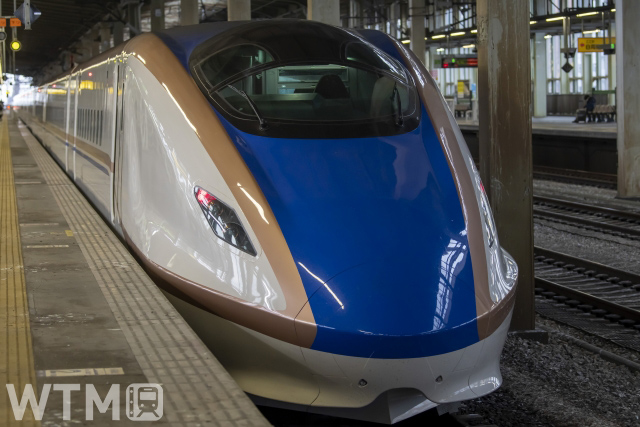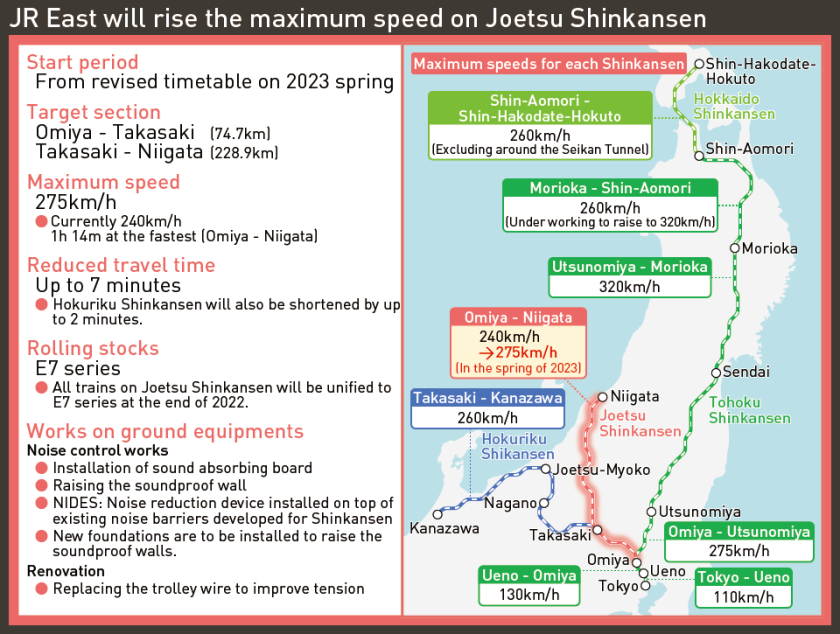JR East announced that it is expected to complete the ground equipment renovation work to improve the maximum speed between Omiya and Niigata on the Joetsu Shinkansen, and will shorten the required time from the spring of 2023.

Tokyo and Niigata will be even closer
Currently, the maximum speed between Omiya Station and Niigata Station is 240km/h, but preparations are underway to raise it to 275km/h to improve passenger experience from the timetable revising in the spring of 2023. Details of the new timetable will be announced as soon as it is decided, but the required time is expected to be shortened by up to 7 minutes. The fastest train of the current schedule (outbound “Toki 311”) runs between Tokyo and Niigata in 1 hour 36 minutes, but there is a possibility that a train that runs in less than an hour and a half will appear due to speed improvement.
At the same time, the Hokuriku Shinkansen, which shares the tracks between Omiya and Takasaki, is expected to reduce the required time by up to about 2 minutes (see the figure below for the transit map showing the maximum speed of each Shinkansen section).
Between Omiya and Niigata, which was the target of this speed improvement, surveying of ground equipment that requires noise control began in May 2019, and construction work such as installing sound absorbing boards and raising noise barriers is currently underway. In addition, the installation of the noise reduction device “NIDES” for Shinkansen, which was developed mainly by JR East and applies the mechanism of sound diffraction and interference, will be promoted. It is expected that a series of countermeasure works will be completed by the end of March 2023.

With this increase in maximum speed, all trains on the Joetsu Shinkansen will be unified into E7 series trains by the end of March 2023, and the conventional E2 series operation is scheduled to end.
![[WTM] Railway & Travel News](https://en.wtmnews.net/wp-content/uploads/sites/3/2020/11/cropped-wtm_logo.png)